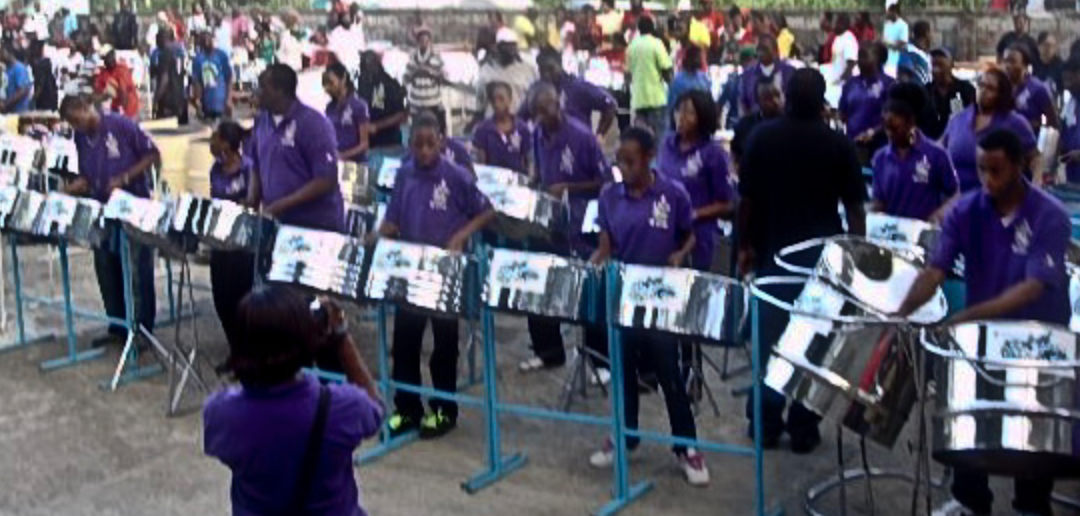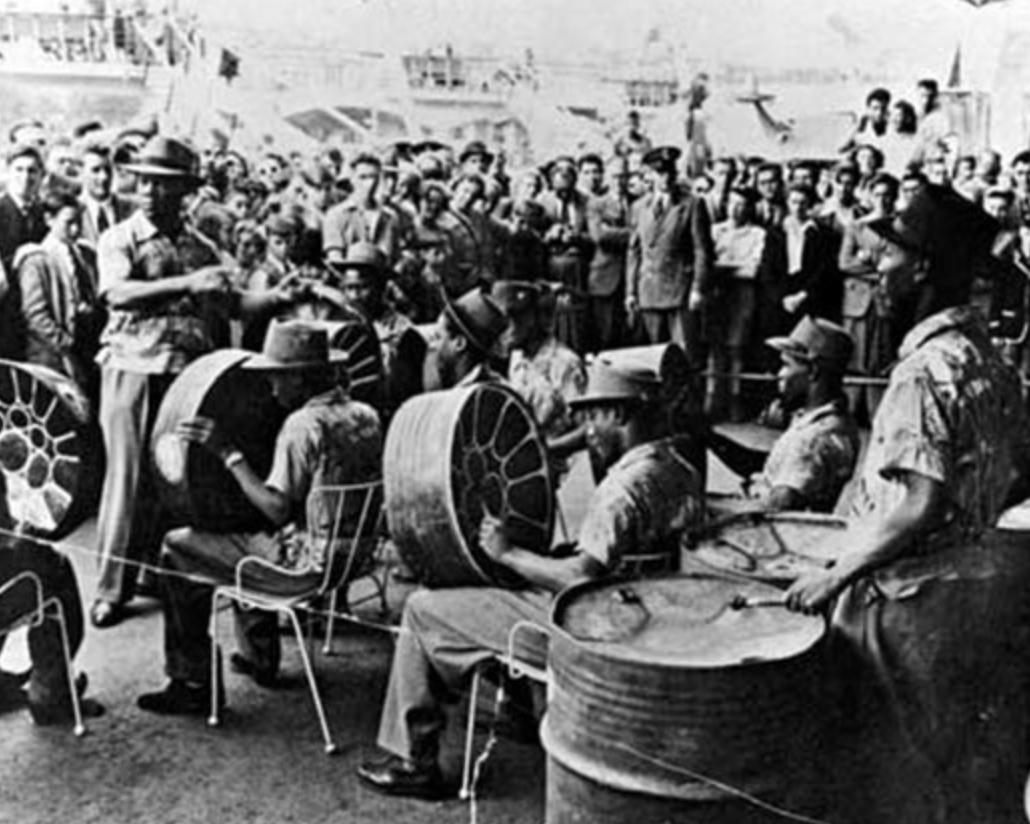The Bomb and its Components
By Carl Johnson and Jack Galliett
In the world of classical music, there are many different interpretations of how a piece should sound. But I bet Beethoven never expected his music to be played in a steel band arrangement. In Trinidad a event called “The Bomb” is held and old classical music is brought back to life in a calypsonian way. In this report we shall dive into what the “The Bomb” is and the music that is played at this event.
In Trinidad there is a steel band contest that is called “The Bomb”. This contest was created out of rivalries between different steel bands trying to out-do each other by playing foreign tunes in the street. This contest was very popular during the 50’s and the 60’s but has become one of the major contests of Trinidad Carnival. Some of the most popular genres of music in the Bomb contest are Latin American and Classical music that are taken and arranged for a party.
Bomb music is special in the way that it takes old classical music and makes it into something new. One example is of classical piece that has been ‘turned calypsonian’ is the Flight of the Bumblebee by Nikolai Rimsky-Korsakov (https://youtu.be/aYAJopwEYv8?list=PLk5n9boSmJ82kzsEwOlfCRkygABDnw1QU). The Flight of the Bumblebee is a fast piece that’s melody moves quickly between instruments and sections. A band called the Desperadoes recorded an arrangement of this piece with the feel of a calypso rhythm designed to fit a Road March or Bomb performance (here is the recording of the Desperadoes and the Flight of the Bumblebee https://youtu.be/LfSWxExOCq8?list=PLk5n9boSmJ801Ny8Ih24nkyfpoRxQrkez). In their version you can hear little samples from the Bumblebee dancing around with the new grove that gives the song the ability to be marched to and be the life of the party. This is one of many examples of actual Bomb arrangements that have been performed and recorded at carnival. Another interesting example of how the arrangements can differ from the original is given in Shannon Dudley's book Music from behind the Bridge : Steelband Aesthetics and Politics in Trinidad. In his book he talks about how a group took Beethoven’s Minuet in G, a song in a time signature of ¾ (Waltz feel) and transformed the song into march with a 4/4 time signature and lively rhythm. They took the original melody and assigned the high voices to cover that part. Then with the tenors, a strum rhythm was made based off of the cords in the original piece. Finally the bass got a supporting line and the engine room(rhythm instruments) a steady beat to complement the piece. All this creates a new song for the performers to show their audiences and fight for the winning title in the competition.

In each steel band there are a number of arrangers that work with each one. It is the job of these arrangers take a popular calypso or selection from the classical world and change it into an arrangement that can be played by the steel band. Going back to the Desperadoes and their version of Flight of the Bumblebee, the arranger’s name for the piece is Beverly Griffith, who is an arranger that has worked with the group on multiple occasions. Some of the other people that have arranged for the Desperadoes are Clive Bradley or Robert Greenidge. All three arrangers have composed winning songs for either the Bomb events or Panorama event making the Desperadoes widely known for the music that they perform with. Some of those winning titles are known as “Obeah Wedding” by Griffith, “Pan in Harmony” by Bradley, “Pan Night and Day” by Griffith and Greenidge, “Musical Volcano” by Greenidge, and “Picture on my Wall” by Bradley. The Desperadoes have also participated in (Pan Is Beautiful) Steel Orchestra Music Festival in Trinidad and Tobago and there won a total of three times. One of the three winning songs that they performed was Marche Slave by Tchaikovsky which was arranged and conducted by Dr. Pat Bishop.
All these people come together to play lively music to have fun and to party during Carnival, while using modern and traditional calypso music. But the people that play at the events for the Bomb bring old literature from western classical music and gives it the breath of the Carnival culture. Through the arrangers to the performers, it is fascinating that classical music is being used in this environment. Classical music will live on and remain an important part of many different cultures.
"The Bomb - Steelpan Teaching Resources @mypanyard ... UK Loves Pan." The Bomb - Steelpan Teaching Resources @mypanyard ... UK Loves Pan. N.p., n.d. Web. 01 Nov. 2015. <http://www.mypanyard.co.uk/The-Bomb-Competition-1963.html>.
"Desperadoes Steel Orchestra." Wikipedia. Wikimedia Foundation, n.d. Web. 01 Nov. 2015. <https://en.wikipedia.org/wiki/Desperadoes_Steel_Orchestra>.
Dudley, Shannon. Carnival Music in Trinidad: Experiencing Music, Expressing Culture. New York: Oxford UP, 2004. Print.
Dudley, Shannon. "Music from behind the Bridge : Steelband Aesthetics and Politics in Trinidad and Tobago." Google Books. Oxford University Press, 2008. Web. 01 Nov. 2015. <https://books.google.com/books?id=l_OPeZrGSWsC&pg=PA113&lpg=PA113&dq=Trinidad%2Bbomb%2Barrangements&source=bl&ots=g7FRz18rmt&sig=XBPqBYvEfrvkOR_bUo7AvLJJd1U&hl=en&sa=X&ved=0CB0Q6AEwAGoVChMI5e-hkZDwyAIVC9hjCh0EhQZD#v=onepage&q=Trinidad%20bomb%20arrangements&f=false>.
"Free Steel Drum / Steel Pan Sheet Music." Free Steel Drum / Steel Pan Sheet Music. N.p., n.d. Web. 01 Nov. 2015. <http://www.steelpan-steeldrums-information.com/free-steel-drum.html>.
Work:
Carl: Research, Writing, Youtube
Jack: Writing, Pictures, Bibliography